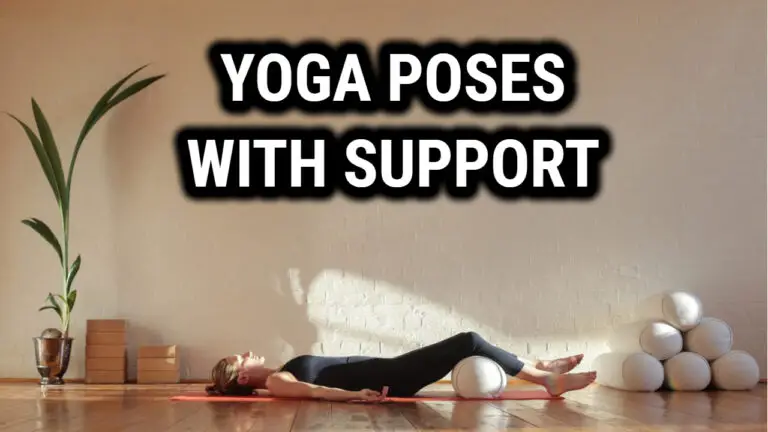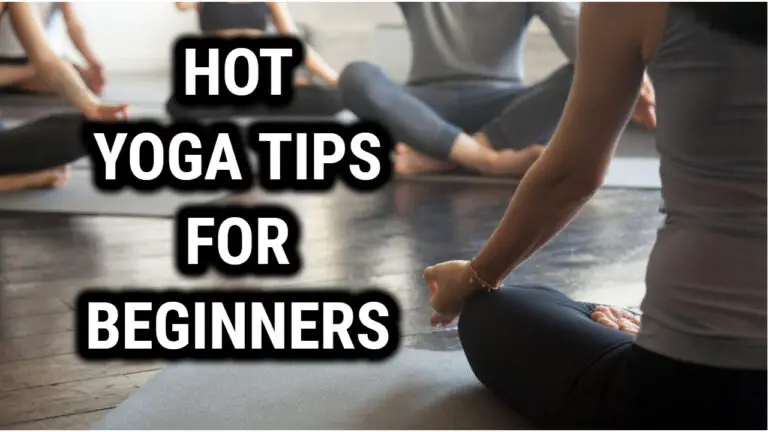What Is Kripalu Yoga – Is It a New Way To Reduce Stress

Kripalu Yoga is quickly becoming one of the most popular forms of yoga globally, and for a good reason. It’s a yoga practice that combines physical postures( yog asana), breathing (prana) techniques, and meditation to help bring balance to your body, mind, and spirit, similar to the yoga style of hatha. If you want to get started with yoga but need to know where to begin, Kripalu Yoga may be the perfect fit.
Whether you’re a beginner or an experienced yogi looking for something new to explore, this article is here to help guide you on your journey into the world of Kripalu Yoga. So let’s dive in!
Origins And History Of Kripalu Yoga
Kripalu Yoga is one of the most popular forms of yoga in the United States, with over 8 million practitioners. Originating from the teachings of Amrit Desai, Kripalu Yoga has become a popular form of yoga for people of all levels. Kripalu yoga has its roots in ancient yogic texts and literature, but it primarily evolved from the teachings of Swami Kripalvananda.
Sri Kripalvananda, or Swami Kripalu, was Amrit Desai’s teacher (yoga guru) and an expert in kundalini yoga. Kripalu yoga focuses on self-discovery and connecting to one’s inner wisdom (looking inward).
Amrit Desai founded the first Kripalu ashram in India. He was a master teacher who dedicated his life to teaching yoga and meditation. Eventually, he moved to the United States and began teaching yoga classes nationwide, introducing Americans to Kripalu Yoga.
Desai believed that any style of yoga could be used as a path for spiritual growth but that it must be taught in a way that would help people connect with their inner wisdom and intuition. He also emphasized holistic healing by balancing body, mind, and spirit.
As such, many of Desai’s teaching focused on integration and unity between physical postures and internal practice. This holistic approach set Kripalu Yoga apart from other styles of yoga at the time.
Kripalu Yoga has since grown into a global phenomenon, with practitioners worldwide utilizing its teachings for physical health, mental well-being, and spiritual transformation.
By blending physical postures with relaxation techniques, guided visualizations, pranayama (breathwork), mantra recitation (chanting), and yogic philosophy, practitioners can create an integrated experience that increases awareness and connection with one’s true self. With this in mind, let us explore some benefits of practicing Kripalu Yoga.
Benefits Of Kripalu Yoga
Kripalu Yoga has many physical, mental, and spiritual benefits. Here are some of the critical advantages of Kripalu Yoga:
• Physical healing: – Improved posture and balance – Increased mobility, flexibility, strength, and endurance – Reduced stress and tension in the body
• Mental Benefits: – Greater clarity of thought and improved focus – Enhanced capacity to manage emotions more effectively – Improved creativity and problem-solving skills
• Spiritual Benefits: – Strengthened connection to one’s inner wisdom – A more positive outlook on life
Kripalu Center For Yoga and Health
At the Kripalu Center for Yoga & Health in Massachusetts, practitioners can access classes taught by experienced teachers to help them pursue these benefits. Additionally, practitioners can better understand Kripalu Yoga through workshops, retreats, and special programs.
As part of some of their teacher training programs, Kripalu provides dance training too, and after a yoga session is completed, they end with a ‘Jai Bhagwan’ instead of Namaste, which feels great too. Kripalu Yoga provides significant physical healing, mental benefits, and spiritual growth opportunities.
By learning about its components and regularly integrating them into practice, practitioners can experience greater well-being in all aspects of their lives. Moving forward, let us explore what components make up the Kripalu practice.
Components Of The Kripalu Practice

Kripalu Yoga is a holistic practice involving various techniques to help practitioners achieve physical, mental, and spiritual well-being.
At the core of the practice are three components: yoga poses, pranayama exercises, and mindfulness practices. These components form the basis of Kripalu Yoga and can be used together or individually depending on one’s goals.
Yoga poses are an integral part of Kripalu Yoga. They can help to strengthen muscles, improve flexibility, and reduce tension in the body. Practitioners should move slowly and consciously into each pose while observing their breath. This will help them stay aware of their physical sensations without judgment or resistance.
Pranayama exercises are also crucial in Kripalu Yoga. These breathing practices involve controlling one’s breath to increase energy levels, clear the mind, and calm the nervous system. Pranayama can be done alone or with yoga poses for added benefits.
Mindfulness is a crucial element of Kripalu Yoga, allowing practitioners to cultivate acceptance and adaptability. Through mindfulness meditation, practitioners learn how to observe their thoughts without judgment or attachment and become more aware of their present experiences. This helps them develop greater insight into themselves and more compassion toward others.
By integrating yoga poses, pranayama exercises, and mindful practices into their routine, practitioners can gain more remarkable physical healing, mental clarity, and spiritual growth within themselves through Kripalu Yoga. Let us explore how these components combine into the postures and sequences of a Kripalu practice.
Postures And Sequences
Based on Kripalu Yoga’s components, postures and sequences are created to help practitioners focus on their practice. Like a picture that is made up of many tiny brushstrokes, each yoga posture serves as an individual brushstroke in the giant portrait of a Kripalu class. Combined and sequenced, these poses form a unique experience with its own benefits.
Moving through different postures in a Kripalu class can provide physical strength and flexibility, but it also allows for mental clarity and emotional balance. Whether it’s the standing poses for grounding or the reclined poses for relaxation, each pose has its purpose and benefit.
By connecting breath with movement throughout the class, practitioners can experience greater awareness within themselves while they build strength, stability, and flexibility in their practice.
Through deepening into each pose while maintaining mindfulness, practitioners can gain insight into themselves and cultivate acceptance of their bodies and mind. By connecting this inner awareness with movement, they explore new perspectives while opening up to new possibilities.
As they continue to move through the postures and sequences in their practice, they can become more present with all aspects of their being – body, mind, heart, and spirit – ultimately leading them to true freedom within themselves.
Modifications For Different Levels Of Ability

No matter the ability level or experience, Kripalu Yoga classes are designed to be accessible to all levels. Yoga teachers have the knowledge and experience to provide modifications so that everyone can get the most out of their practice. Here are some ways that they may modify a Kripalu yoga class:
• Props: Props like blocks, straps, and bolsters can help practitioners find comfort in certain poses by providing extra support.
• Sequencing: The order in which poses are sequenced can be modified depending on a practitioner’s needs and goals.
• Modifications: Different poses can be adjusted for different levels of ability, whether adding a variation to make the pose more challenging or taking it down a notch to make it easier.
• Breathwork: Pranayama techniques such as alternate nostril breathing or Ujjayi breath can be included in one’s practice for greater mental clarity and emotional balance.
• Meditation: Guided meditations can be added throughout the class to allow practitioners to explore more profound states of awareness within themselves.
Kripalu Yoga classes offer something for everyone, regardless of their experience or ability. With modifications from experienced yoga teachers, practitioners can move through different postures while cultivating inner awareness and acceptance with each movement.
Also Read: Kundalini Yoga Poses: Awakening Your Energy
What To Expect In A Class
Attending a Kripalu Yoga class can be an exciting experience. This form of Hatha Yoga is best known for focusing on mindful movement and breathwork.
In each class, poses are held for extended amounts of time to allow the body to adjust and the practitioner to explore their inner depths. With guidance from experienced Kripalu faculty, practitioners can expect to gain a deeper understanding of how their minds and body interact during their practice.
The physical practice in Kripalu Yoga classes is just one part of the equation. Through guided meditations, deep relaxation techniques, and heart-opening pranayama practices, this style of yoga helps cultivate inner awareness while also nourishing the body.
Each class ends with savasana (corpse pose) to integrate the physical practice with any mental or emotional insights that may have come up during the session.
Developing An At-Home Practice

Once you’ve experienced Kripalu Yoga in class, you may be inspired to develop your own at-home practice. This can be a great way to deepen your understanding of the fundamentals of this style of yoga while also allowing you to explore more advanced poses and breathwork techniques.
When starting an at-home practice, it’s essential to ensure that you are comfortable with the basics before progressing further. This means familiarizing yourself with the various postures associated with Kripalu Yoga and the breathing exercises accompanying them.
How to Perform Kripalu Yoga at Home
1. Begin by finding a quiet and comfortable space in your home. This can be in a room or outdoors. Make sure the space is free of distractions and clutter.
2. Unroll your mat and come to a comfortable seated position. Take a few moments to quiet your mind and body.
3. Start by focusing on your breath. Take slow, deep breaths while allowing your body to relax and your mind to become still.
4. Begin your practice with a few gentle stretches and twists. Move slowly and mindfully, paying attention to how your body feels.
5. As you move through your practice, focus on the connection between your breath and your body. Move with each inhale and exhale.
6. Whenever you feel ready, practice a few yoga postures like Mountain pose Tadasana, Half Moon pose
Ardha Chandrasana, Standing Squat pose Utkatasana, Eagle pose Garudasana, Warrior pose Virabhadrasana, Triangle pose Trikonasana etc find more poses of Kripalu yoga .
7. When you’re done with your practice, come to a comfortable seated position. Take a few moments to sit in stillness and reflect on your practice.
8. Thank yourself for taking the time to practice, and end your practice with a short meditation.
Frequently Asked Questions
What Is The Cost Of A Kripalu Yoga Class?
The cost of a Kripalu yoga class can vary depending on class type, location, and teacher. Typically, classes range Mon – Fri = $125 and Saturday – Sunday = $150. Those new to Kripalu may find it more beneficial to purchase a package or series of classes to get the most out of their investment. In addition, many studios offer discounts or special promotions for first-time students.
Are There Kripalu Yoga Classes For Beginners?
Are you considering taking up yoga but need help figuring out where to start? Well, why not join the legions of people raving about Kripalu Yoga?
That’s right – Kripalu Yoga is the way to go if you want a gentle and mindful approach. But what about classes for beginners? Is there such a thing as ‘Kripalu Yoga for Beginners’? Of course, there is!
We all have different needs when it comes to yoga. It can be daunting to want to join a class full of experienced yogis or even just people with more experience than you.
That’s why having dedicated classes specifically designed for starting out can be valuable. Kripalu Yoga classes consider this and offer lessons tailored to meet the needs of those just starting their practice.
Where Can I Find A Certified Kripalu Yoga Instructor?
There are many options available to help you get started. Consider looking for a local studio or fitness center offering Kripalu yoga classes. Many studios and gyms will have certified instructors who can introduce you to the fundamentals of this type of yoga.
If you prefer an online option, plenty of websites and resources are available to help you find certified Kripalu yoga instructors.
These websites often have detailed information about the instructors, including their credentials and teaching styles. They may also offer reviews from other students who have used the instructor’s services.
TIP: When searching for a certified Kripalu Yoga instructor, it is essential to ensure they are experienced and knowledgeable in practice. This will ensure that your experience is safe and effective as you learn more about this form of yoga.
Is Kripalu Yoga Suitable For People With Physical Limitations?
The beauty of Kripalu Yoga lies in its ability to be tailored to each individual’s unique needs. It can be modified and personalized to suit any physical limitation while providing a whole yoga experience.
Each pose can be adjusted so participants can find their edge without pushing themselves too hard. Instructors are trained to pay close attention to each student’s specific needs and limitations, making this form of yoga an ideal choice for those with physical disabilities or limitations.
Related Read: What is Root Yoga: Unlock Your Inner Potential with Root Yoga
Conclusion
Kripalu Yoga is a form of yoga that emphasizes self-awareness and compassion. People of all ages and abilities can practice it.
With a dedication to practice and guidance from a certified instructor or online resources, anyone can experience the transformational power of Kripalu Yoga.





